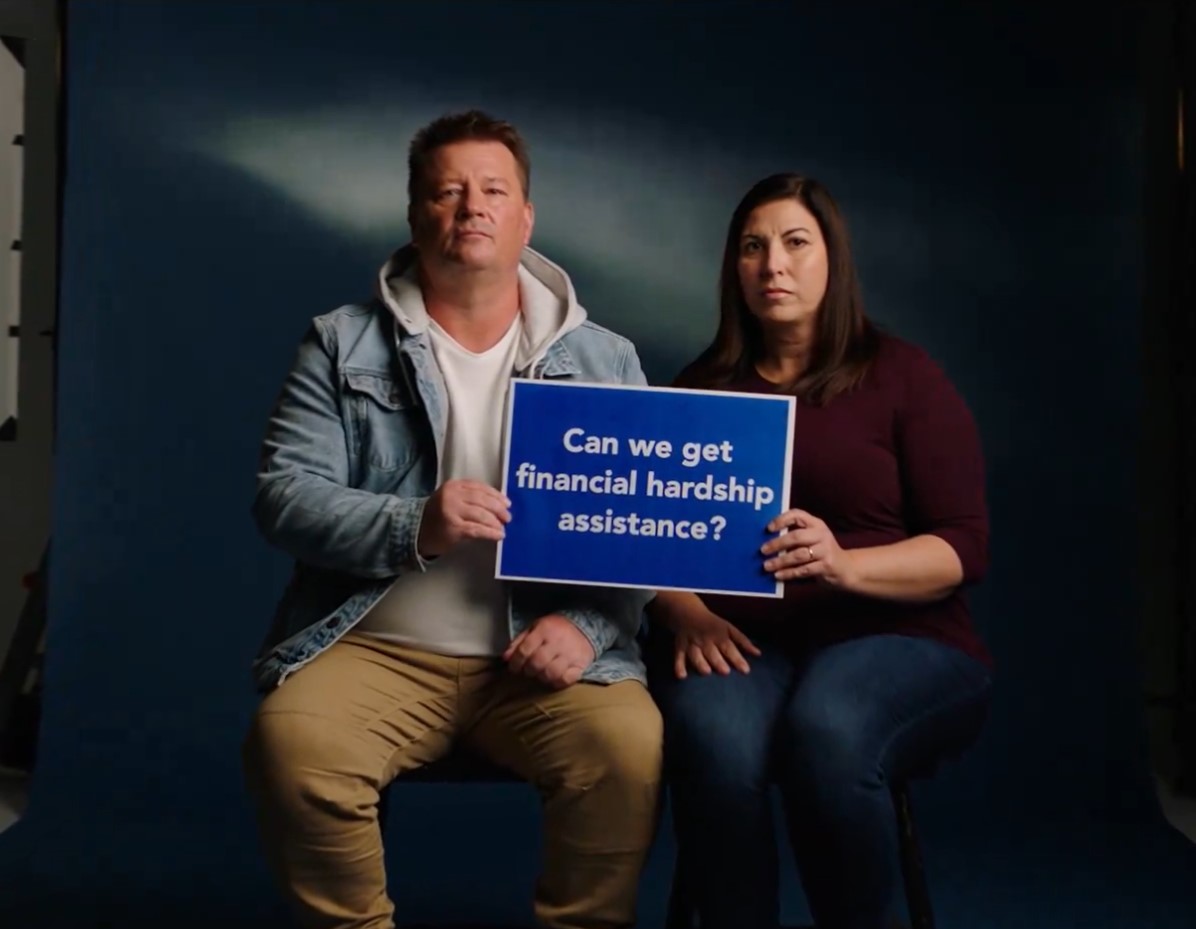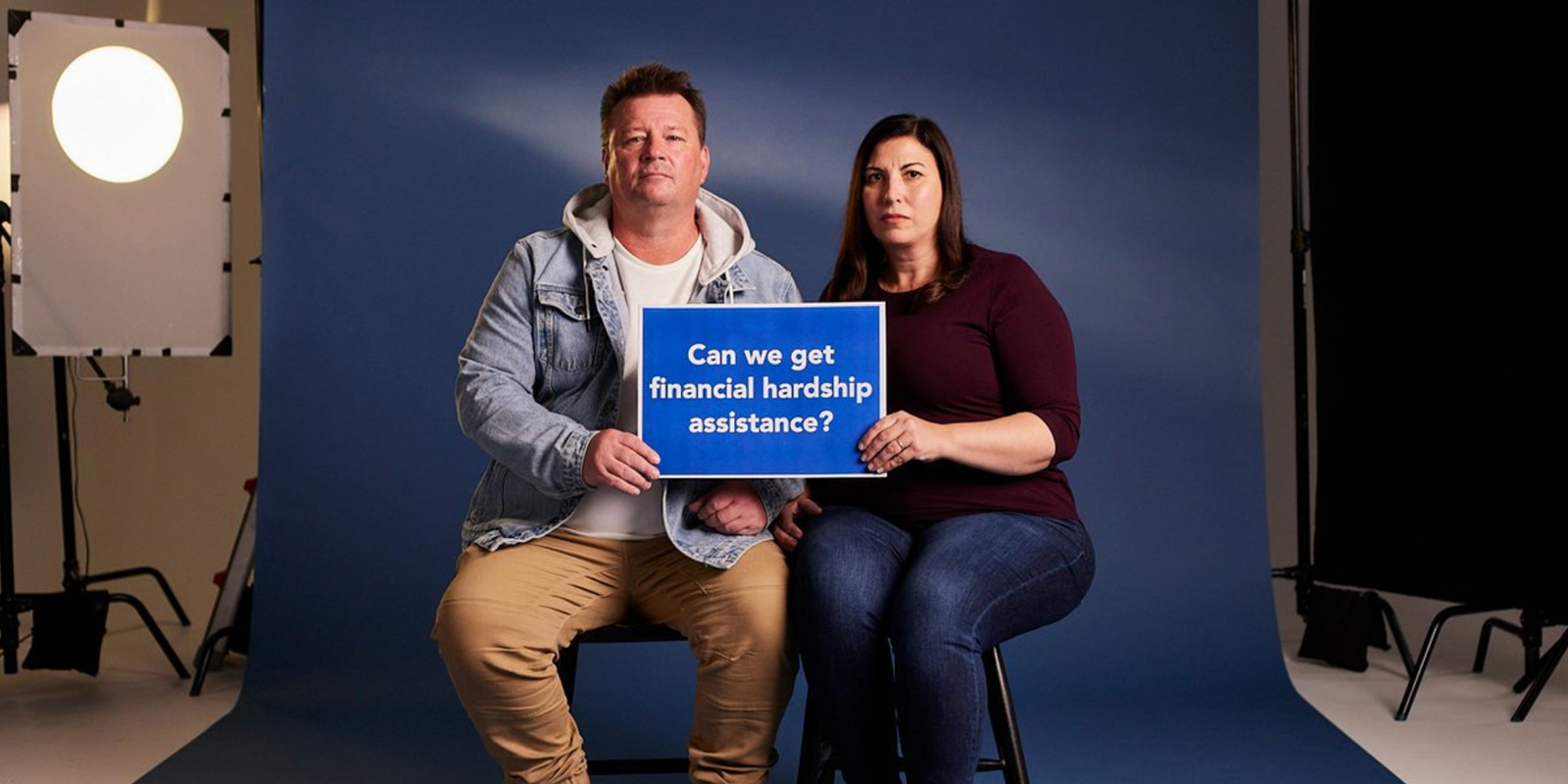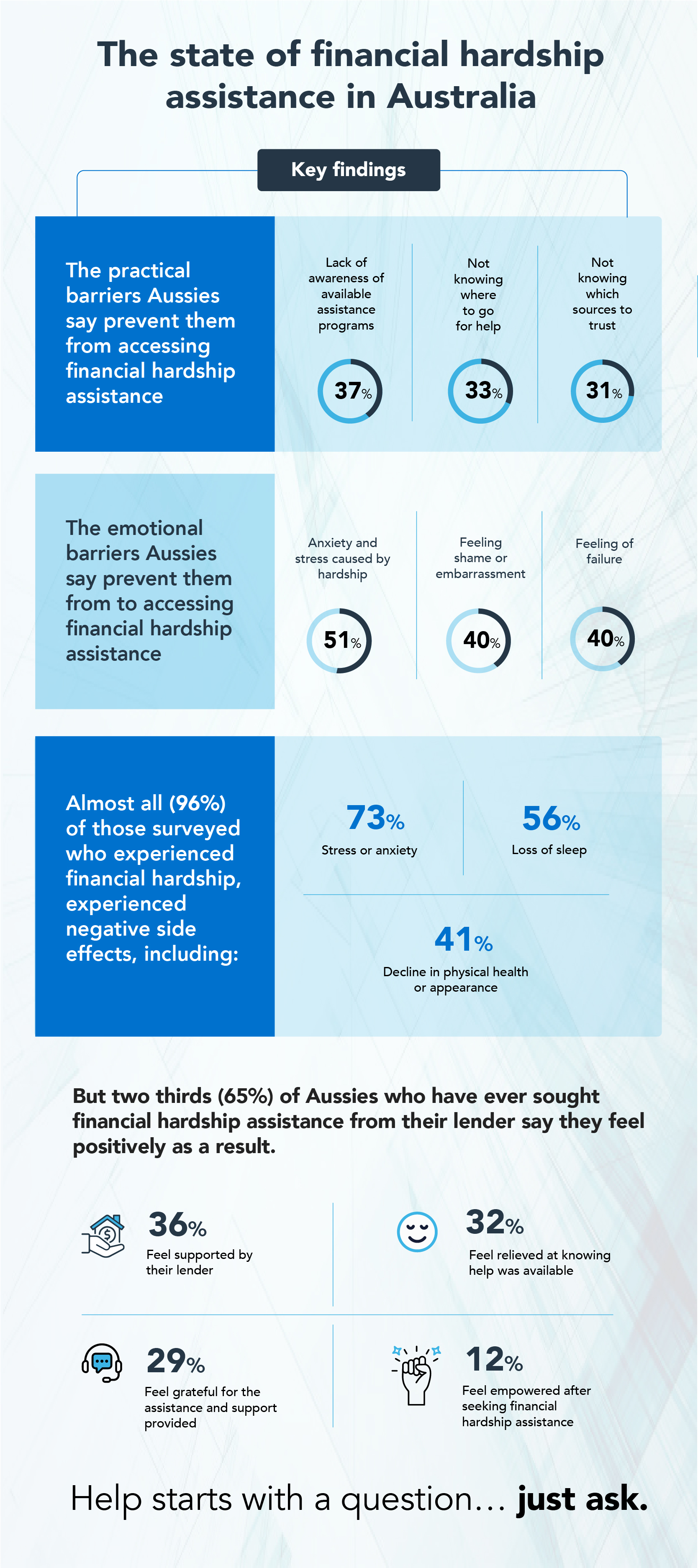

New research shows many Australians in financial hardship are not asking their lenders for help.
Australians are being urged to directly seek financial hardship assistance from their bank or lender, as new nationwide research released by ASIC’s Moneysmart sheds light on the state of financial hardship in Australia. The research found that 47% of Australian adults with debt, the equivalent of 5.8 million people, have struggled to make repayments in the last 12 months. The top reasons for this include cost of living pressures, reduced income and unexpected expenses.
Despite struggling to make repayments, three in 10 Australians (30%) say they would not seek a hardship assistance arrangement from their bank or lender. In fact, Australians say they would rather sell their belongings and assets (42%) or get a second job (40%) before applying for financial hardship assistance.
“For many Australians, the path to seeking help feels daunting, confusing, and challenging. It is concerning that people would rather sell their personal belongings or get a second job rather than seek financial hardship assistance,” said ASIC Commissioner Alan Kirkland.
“Customers in hardship are entitled under the law to request assistance. These findings should be top of mind for lenders when supporting Australians in financial hardship.
“The message for Australians experiencing financial stress is that banks or lenders have a responsibility to support customers. If you are worried about being able to make your repayments, you’re entitled to ask your bank or lender for help.
“If you aren’t happy with your bank or lender’s response, make a complaint and, if that doesn’t resolve the issue, contact the Australian Financial Complaints Authority.”
When it comes to seeking help, the struggle is real for Aussies
Lack of awareness and emotional barriers are holding Australians back from asking for help when they need it.
More than half (55%) say they are not aware that they are entitled to ask their bank or lender for financial hardship assistance and just one in five (20%) of those surveyed said they had ever sought financial hardship assistance.
Key findings include:
- Lack of awareness of available assistance programs (37%), not knowing where to go for help (33%) and not knowing which sources to trust (31%) are the top 3 potential practical barriers.
- Anxiety and stress caused by hardship (51%), feeling shame or embarrassment (40%) and feeling of failure (40%) are the most common potential emotional barriers Aussies face.
- Almost all (96%) of those surveyed who experienced financial hardship, experienced negative side effects, including stress or anxiety (73%), loss of sleep (56%) or a decline in physical health or appearance (41%).
- Of those who would not seek hardship assistance arrangements from their lenders or credit providers, 50% worry it will cost them more in the long run, 32% fear it will negatively impact their credit scores and 31% don't think their lender would do much to help.
ASIC’s Moneysmart encourages Aussies to just ask for help
ASIC’s Moneysmart is launching a new awareness campaign for Australians, Just Ask! Hardship Help is available. This aims to encourage Australians who are struggling financially to contact their lender if they are having trouble making repayments.
“Australians facing financial hardship should reach out to their bank or lender and 'Just Ask' for help. Seeking financial hardship assistance is a right, and lenders are required to respond to every request for hardship assistance," said ASIC Commissioner Alan Kirkland.
Information and helpful tips for Australians experiencing financial hardship is available at moneysmart.gov.au/justask.
The campaign follows the recent release of ASIC’s report ‘Hardship, hard to get help: Lenders fall short in financial hardship support’, which found lenders should be doing more to support Australians who were struggling to meet their repayments. ASIC is following up with lenders about the actions they will take to improve their processes for supporting customers experiencing financial hardship.
Background
ASIC’s Moneysmart program helps Australian consumers and investors by providing free and independent financial information and tools. Over 10 million Australians visit the Moneysmart website each year. Moneysmart is recognised as one of Australia’s leading trusted sources of independent information for consumers and investors.
Research methodology
ASIC via YouGov surveyed 1,061 Australians aged 18+ from 11 to 15 April 2024 to understand the extent and experience of financial hardship. The surveys were carried out online. The findings have been weighted by gender, age and location, and the sample is representative of the Australian population 18+ years.
Downloads
- Key research findings (PDF 175 KB)
- The state of financial hardship assistance in Australia infographic (PDF 2.1 MB)
The state of financial hardship assistance in Australia infographic - text version
Key findings
The practical barriers Aussies say prevent them from accessing financial hardship assistance
- Lack of awareness of available assistance programs (37%)
- Not knowing where to go for help (33%)
- Not knowing which sources to trust (31%)
The emotional barriers Aussies say prevent them from accessing financial hardship assistance
- Anxiety and stress caused by hardship (51%)
- Feeling shame or embarrassment (40%)
- Feeling of failure (40%)
Almost all (96%) of those surveyed who experienced financial hardship, experienced negative side effects, including:
- Stress or anxiety (73%)
- Loss of sleep (56%)
- Decline in physical health or appearance (41%)
But two thirds (65%) of Aussies who have ever sought financial hardship assistance from their lender say they feel positively as a result.
- Feel supported by their lender (36%)
- Feel relieved at knowing help was available (32%)
- Feel grateful for the assistance and support provided (29%)
- Feel empowered after seeking financial hardship assistance (12%)
Help starts with a question… just ask.
